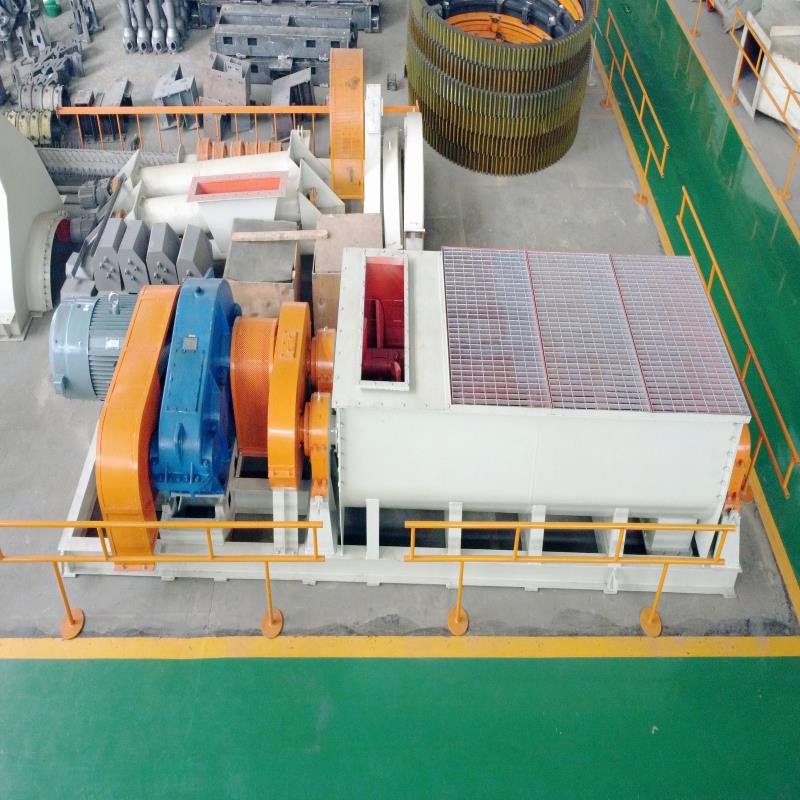- +8618937185591
- +8618937185591
- ec19@zkcorp.com
- +8618937185591


In the critical process of lithium ore (lithium mica, spodumene, lepidocrocite, etc.) acid leaching for lithium battery raw material preparation, highly corrosive hydrofluoric acid and concentrated sulfuric acid work together to present an extremely demanding requirement on the mixing equipment due to the hardness and abrasiveness of the ore itself Traditional equipment often fails quickly in this environment, causing production interruptions and significant cost increases. The dual-axis acid mixing machine was specially designed to overcome this industry's pain points. With its comprehensive anti-corrosion and wear-resistant technology, it has become the core safeguard for lithium battery mineral acid processing!
1. Core anti-corrosion material: The cornerstone for resisting strong acid erosion.
1.1 Top-grade Alloy Selection: The core contact components of the equipment (mixing blades, tank liner, main shaft, etc.) are prioritized to use Hastelloy or 316L. This type of nickel-based alloy exhibits unparalleled corrosion resistance in boiling hydrofluoric acid, concentrated sulfuric acid, and their mixed acids, especially against fatal pitting and crevice corrosion. It is the "gold standard" for handling lithium mining mixed acid environments.
1.2 Special engineering plastics: For specific non-bearing components or seals, PTFE (polytetrafluoroethylene), PFA (perfluoroalkoxy resin) or PVDF (polyvinylidene fluoride) can be selected. They have excellent resistance to hydrofluoric acid and concentrated sulfuric acid, low friction coefficient, and combine anti-corrosion and wear resistance properties.
2. Advanced spraying technology: Create an ultra-strong surface protective layer
2.1 Supersonic flame spraying: High-speed spraying of tungsten carbide or chromium carbide powder on the surfaces of key metal parts (such as mixing shafts and paddles). The coating formed is as dense as ceramic with extremely high hardness (up to HRC 70 or more), effectively resisting the intense erosion and wear of lithium ore.
2.2 High-performance polymer coating: In large-area areas such as tanks, modified PTFE coating or PPO (polyphenylene oxide) coating is applied. They provide an excellent overall acid resistance barrier (especially against hydrofluoric acid), while also having good anti-adhesion properties to prevent material from clumping and being easy to clean.
3. Ceramic Patch/Inner Lining: Provides Ultimate Wear Resistance and Chemical Inertness
3.1 Engineering Ceramic Armor: In areas where wear is most severe (such as blade tips, bottom of the vessel, and feed surface), inlay or adhere aluminum oxide ceramic or silicon carbide ceramic patches/linings. The hardness of ceramics is second only to diamond, and its wear resistance is dozens or even hundreds of times that of steel, completely solving the issue of wear on hard mineral particles.
3.2 Chemical Super Stability: Ceramic materials are absolutely chemically inert to hydrofluoric acid and concentrated sulfuric acid, requiring almost no reaction at any concentration or temperature, providing the purest anti-corrosion protection. Its smooth surface also significantly reduces material adhesion.
4. Equipment Advantages:
4.1 Indestructible Durability: Triple protection (top-grade alloy + hard coating + ceramic armor) creates an "invulnerable body", with a lifespan several times that of standard equipment, significantly reducing downtime due to corrosion and wear.
4.2 No Fear of Strong Acid Mixed Environments: Specially designed for HF + H SO mixed systems, from material to structural details (such as no dead angle design, special sealing), completely eliminating leakage risks, ensuring production safety and environmental compliance.
4.3 Efficient and stable mixing: The dual-axis design produces strong shear and convection, ensuring that high-viscosity, high-solid lithium slurry and strong acid mix quickly, evenly, and thoroughly, improving leaching efficiency and consistency.
4.4 Comprehensive cost optimization: significantly reduce the frequency of expensive spare part replacements, decrease unplanned downtime losses, and lower maintenance intensity; the total cost of ownership is significantly better than traditional equipment.
4.5 Customized Solutions: According to specific lithium ore types (differences in hardness), acid concentration, temperature, production capacity, and other parameters, we can precisely match the optimal anti-corrosion and wear-resistant combination solutions (such as alloy selection, coating thickness and material, ceramic layout, etc.).
Injecting strong power into the future of lithium batteries, choosing a dual-axis acid mixing machine that can truly withstand the dual tests of hydrofluoric acid and concentrated sulfuric acid, and withstand the continuous wear of hard lithium ore, is a strategic decision to ensure the stability of lithium battery raw material supply chains, enhance production efficiency, and reduce environmental risks.